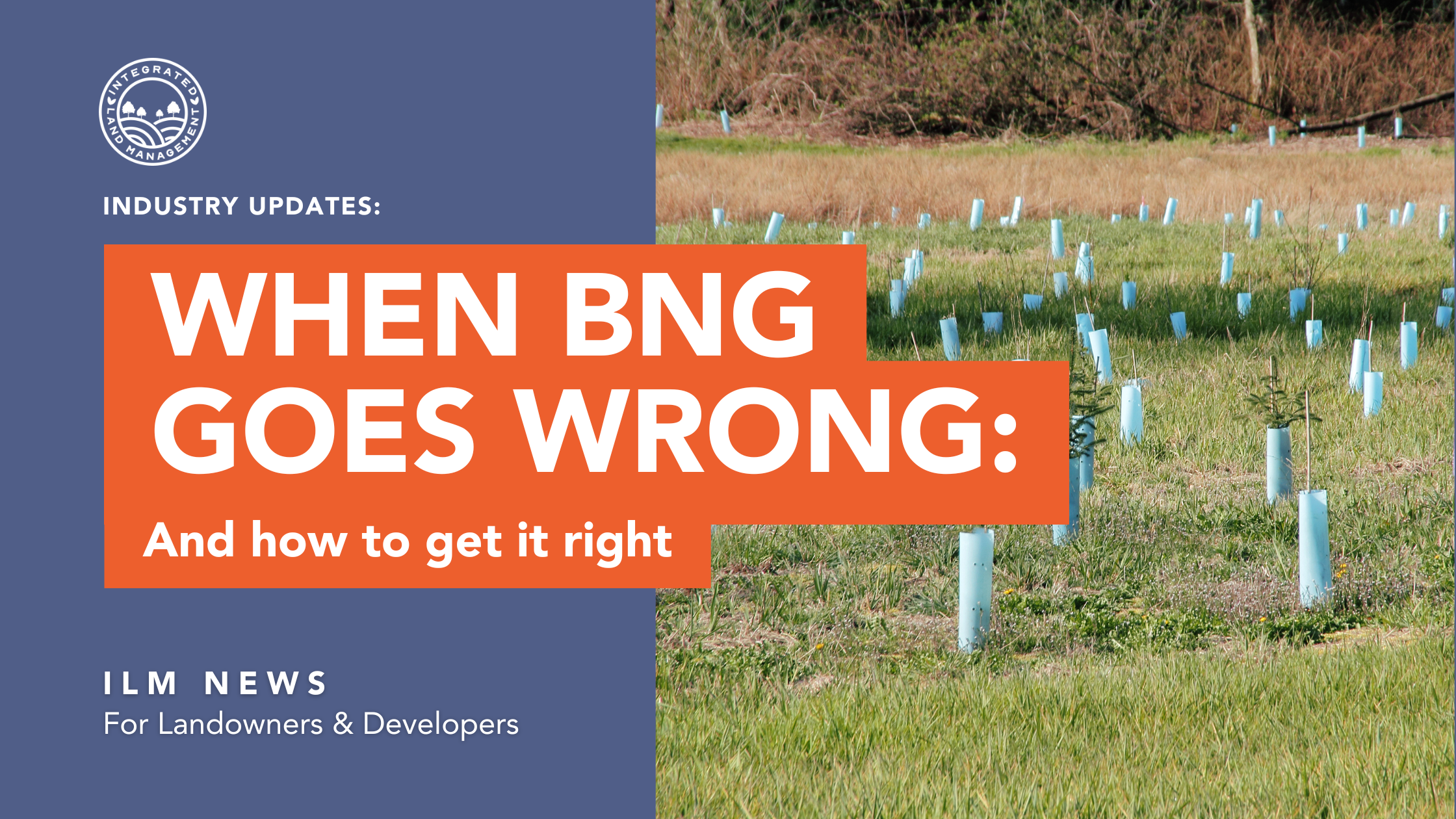When BNG Goes Wrong (and how to get it right).
Biodiversity Net Gain (BNG) is a crucial step toward ensuring development supports nature recovery - but delivering real, lasting gains on the ground is rarely straightforward.
BNG mistakes to avoid. Discover common pitfalls in Biodiversity Net Gain delivery – and how developers and landowners can get it right.
Recent high-profile stories have highlighted large-scale planting schemes where thousands of trees failed to establish. While these headlines focus on failure, the real value lies in learning from the challenges.
These projects show us that delivering effective biodiversity offsetting and habitat creation isn’t always simple. It demands careful planning, local knowledge and long-term commitment.
Understanding Why BNG Projects Can Struggle
Even well-intentioned projects can go wrong if they overlook essential fundamentals:
Site Suitability and Baseline Assessment: Offsetting biodiversity loss successfully depends on understanding local conditions: soil, hydrology, climate and existing habitats. Planting the wrong species in unsuitable conditions sets projects up for failure.
Species Selection and Habitat Design: “Right plant, right place” isn’t just a slogan. Using generic planting lists or failing to consider local provenance and habitat types can undermine biodiversity offsetting goals.
Planting Timing and Technique: Even within recommended seasons, local conditions matter. Dry soils, late planting or poor establishment planning can reduce survival rates.
Long-Term Management and Monitoring: BNG is a 30-year commitment. Without enforceable Habitat Management & Monitoring Plans (HMMPs), even well-designed interventions can fail over time.
Transparency and Reporting: Effective BNG relies on clear reporting: what was delivered, where, and how it performs. Without transparency, it’s hard to monitor outcomes or adapt management strategies.
Why These Lessons Matter for BNG Offsetting
BNG is now mandatory for most planning applications - and for major infrastructure projects from 2026. Local Planning Authorities (LPAs) and stakeholders will expect developers to prove their biodiversity offsetting is not only compliant but actually effective.
High-profile failures can undermine trust in the entire system. They highlight the need to:
Establish robust baselines and realistic targets
Design habitat interventions that reflect local context
Secure long-term legal agreements and management plans
Provide transparent reporting and monitoring
How Integrated Land Management Helps Deliver Successful BNG
At ILM, BNG isn’t just a tick-box exercise - it’s a long-term commitment to delivering genuine, measurable habitat uplift.
What makes our approach different?
When you work with ILM, you’re dealing directly with the team.
We’re known for our hands-on, personal support, and we make sure we get to know your project, your site, and your goals inside out.
Our team also brings real farming and land management experience. We understand the practical realities on the ground because we’ve managed land ourselves. That means we can give landowners advice that’s realistic, achievable, and financially sensible.
For developers, it means clear, honest guidance on the Biodiversity Metric, trading rules, and the process of securing the right units to meet planning requirements - without surprises or delays.
Here’s how we support successful BNG delivery:
Detailed Baseline Surveys to assess suitability and opportunities
Legally Secured Agreements like Conservation Covenants or Section 106s
Habitat Management and Monitoring Plans to ensure long-term delivery
Registered Off-Site Units matched to your project’s trading rule requirements
Expert Consultancy for developers wanting to register and manage their own land for BNG
Whether you’re sourcing off-site biodiversity units or bringing your own habitat bank to market, we’re here to make BNG work in the real world - for nature, for planning requirements, and for the communities where these projects happen.
BNG site: Prospect Hill Habitat Bank in Northumberland (Ref: BGS071024001) offers a high-integrity, fully registered solution - with units available now.
Let’s Get BNG Right, Together
BNG has the potential to transform development and nature recovery. But only if it’s done well. If you’re planning your BNG strategy, exploring off-site biodiversity units, or want confidence that your offsetting is robust and compliant, get in touch.
FAQs
-
BNG is a planning policy requiring developments to leave biodiversity in a ‘better state than before’, often through creating or enhancing habitats.
-
Failures often stem from poor site assessments, wrong species selection, inadequate planning, or lack of long-term management.
-
ILM offers registered off-site biodiversity units, baseline surveys, legal agreements, and long-term management plans to ensure projects meet planning conditions and deliver real ecological benefits.



